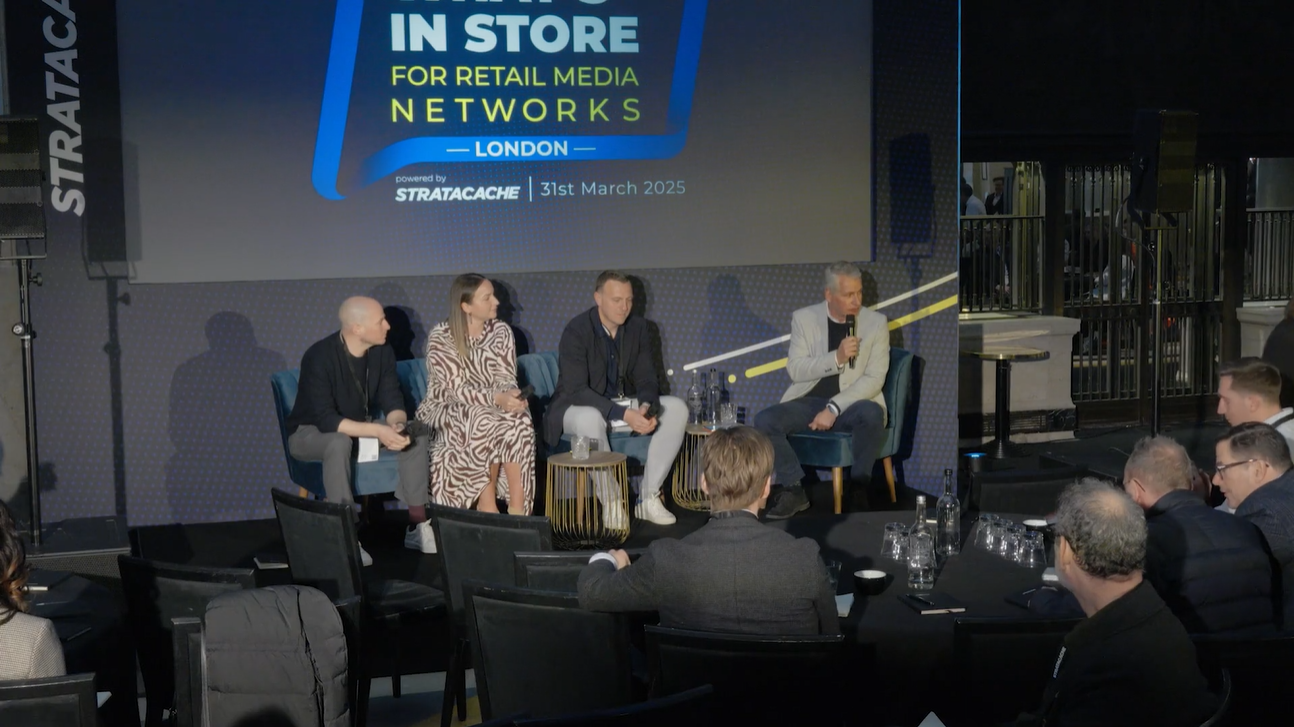




As the What’s In Store for Retail Media Networks event in London progressed, session six delivered a much-anticipated shift in perspective — moving from retailers and media owners to the voices of global consumer brands. With leaders from Unilever, Heineken and Danone on stage, the discussion focused on the growing role of retail media networks (RMNs) and how fast moving consumer goods (FMCG) brands are navigating this rapidly evolving space.
Panelists Katie Moreton (Unilever), Craig Woolley (Heineken UK), and Russell Lincoln (Danone) offered candid insights on the challenges, successes and ambitions shaping how brands connect with shoppers at the point of decision.
At the heart of the discussion was a shared belief: while the fundamentals of brand storytelling haven’t changed, the methods — and the media — have.
Danone’s Russell Lincoln pointed out that brands are still focused on delivering compelling stories to the right people, but RMNs now offer greater proximity to the moment of purchase. Katie Moreton added that shopper marketing has become significantly more personalized, enabled by both the data RMNs provide and the creative freedom they now allow in-store and online.
For Heineken’s Craig Woolley, the shift goes beyond the store aisle. With media opportunities now emerging in stadiums, bars and music venues, brand engagement must now stretch across multiple environments — each with its own pressures and opportunities.
The panel addressed the persistent challenge of organizational silos — particularly the fragmentation of budgets across brand, media, shopper and trade marketing. Woolley explained how Heineken is actively restructuring teams to unify media and shopper disciplines, but noted that wider transformation across businesses is still needed.
Moreton called for greater alignment across omnichannel teams, emphasizing the need for shared planning and regular collaboration — even as budgets remain separated in the short term. Lincoln agreed, adding that successful retail media planning often relies on internal teams building agile, cross-functional “squads” to meet market-specific needs.
While enthusiasm for RMNs is high, the panel was clear-eyed about the industry’s biggest challenge: measurement. From inconsistent attribution models to disconnected data systems, brands are still struggling to quantify retail media effectiveness in a consistent, actionable way.
Moreton noted a welcome shift away from ROI and ROAS as sole indicators of success. Instead, Unilever is focusing on customer acquisition, brand incrementality, and category uplift. Woolley echoed this, citing the need for a unified view across in-store activations, digital media and performance data.
Lincoln pointed out that while FMCG brands are insight-driven, they often lack the internal data capabilities to generate those insights independently. He called for stronger partnerships with RMN providers to surface the insights brands need to justify — and optimize — spend.
A recurring theme throughout the session was the importance of deeper collaboration between brands and retail media partners. The panelists made it clear: brands want access not just to inventory, but to expertise, insights and performance data.
Lincoln challenged RMN providers to emulate the consultative approach of major digital platforms like Google and Meta — bringing proactive insights and measurement support to the table. Moreton emphasized the importance of trust and transparency, encouraging open dialogue around the shared challenges brands and retailers face.
For Woolley, alignment between media agencies and retailer partners remains a pain point. He called for clearer, joined-up KPIs and a more collaborative approach to joint business planning — particularly as media investments become increasingly central to commercial negotiations.
Looking to the future, the panel shared a bold vision for where retail media is headed.
Woolley described his goal of building a dedicated RMN team with clear budget ownership, deep expertise and a full-funnel media strategy. Moreton envisioned in-store environments becoming as personalized as digital ones — complete with app-triggered offers and dynamic screen content tailored to individual shoppers.
Lincoln suggested that, in time, the ‘retail’ label will drop entirely. Retail media, he predicted, will simply become another channel in a brand’s media mix — valued not as a siloed function, but as an integrated part of how brands build awareness, drive conversion and grow loyalty.
One thing was clear: retail media is no longer a niche opportunity. It’s a central pillar of how the world’s biggest brands are connecting with shoppers — wherever they are, and whatever the moment.
Unlock the insights—watch the full masterclass here.
Explore every session from London’s What’s In Store for Retail Media Networks event here.